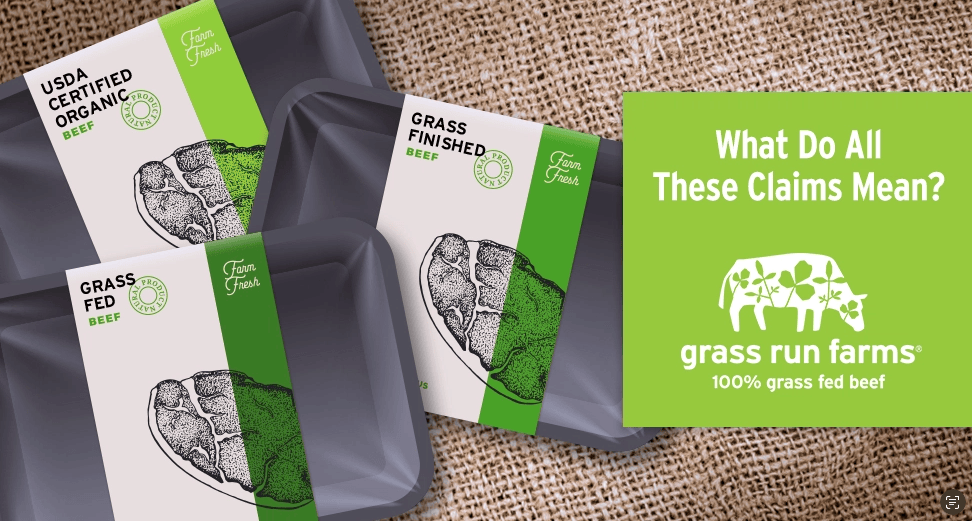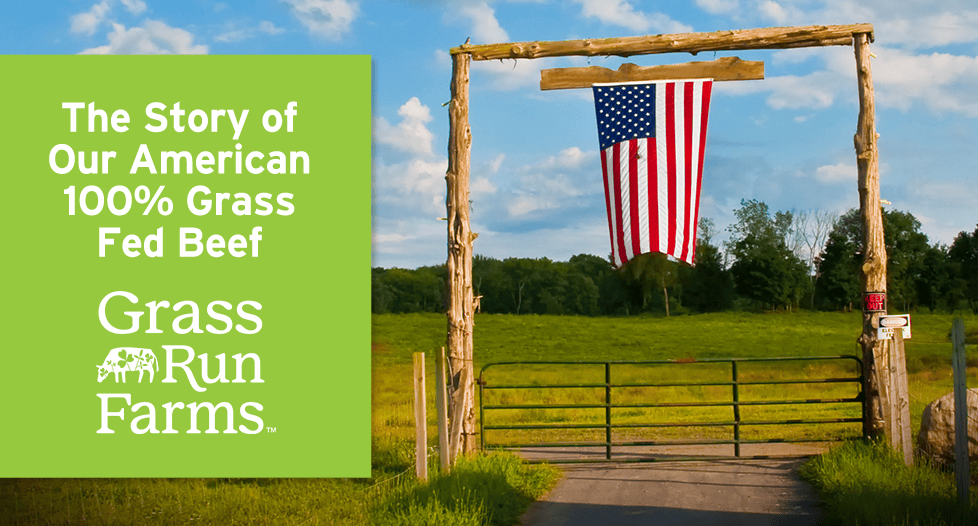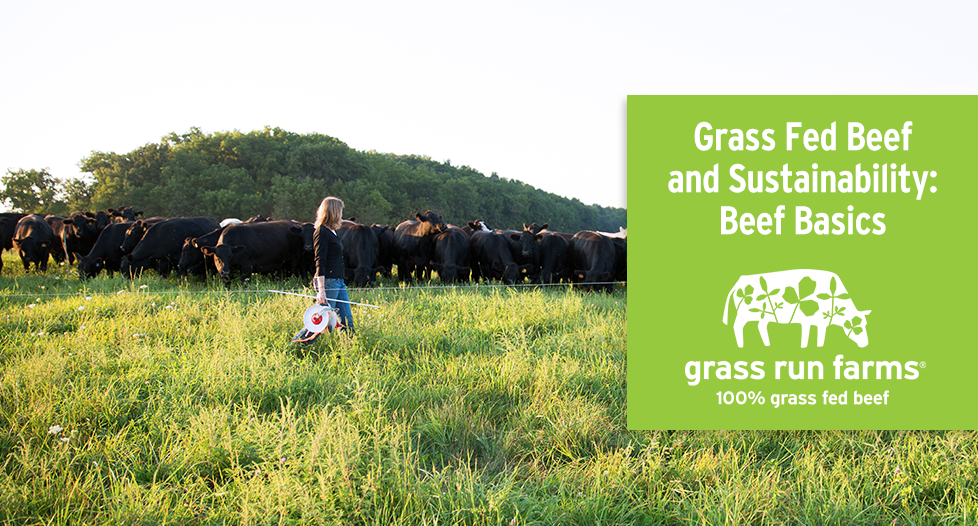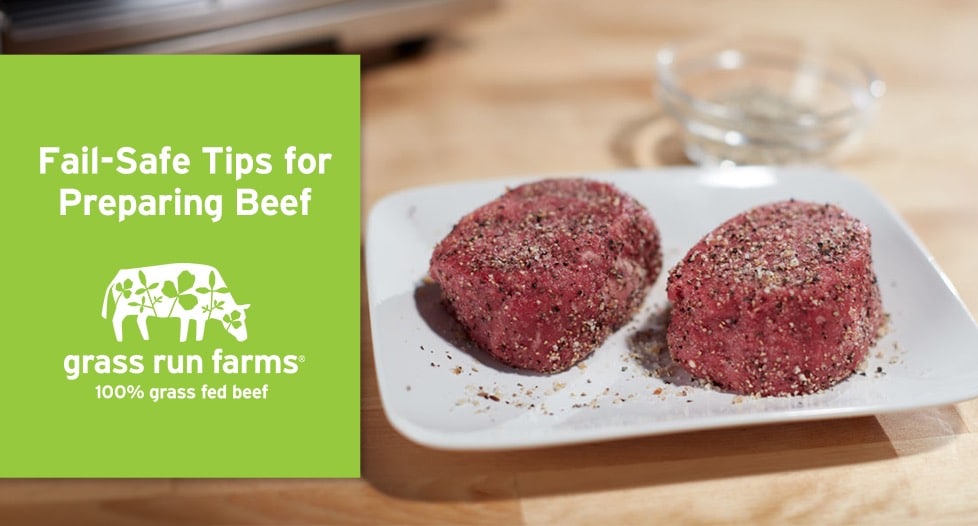November 12, 2024
Shopping in the world of beef labels can feel like translating a foreign language. With terms like “grass fed,” “grass finished,” “hormone-free,” and “USDA Choice” crowding the shelves, it’s no wonder many shoppers feel overwhelmed.
At Grass Run Farms, we believe in empowering consumers with knowledge. That’s why we’ve created this guide to break down the most common beef label claims and help you choose the right beef for your family. So, let’s dive in and discover what these labels truly mean and how they can help you make informed choices.
What is grass fed beef?
When “grass fed” is printed on beef packaging, the beef is produced from cattle that consumed grass and forage as part of their diet at some point during their lives.
What is grass finished beef?
The claim “grass finished beef” means that cattle received a grass or forage diet their entire lives. In other words, they never received grain.
What does it mean if beef is 100% grass fed?
“100% grass fed” and “grass finished” hold the same meaning: cattle only consumed grass and forage and never received any grain or concentrates.
What is the difference between grass fed and grass finished beef?
As a good rule of thumb, “grass fed” means “sometimes” eating grass and forage. On the other hand, “grass finished” or “100% grass fed” means “forever” eating grass and forage.
What do Grass Run Farms cattle eat?
Our cattle are 100% grass fed and finished, only consuming grass and forage for their entire lives while they are raised right here in America’s heartland. Their diet consists of:*
- Alfalfa hay and silage
- Oat hay and silage
- Barley hay and silage
- Ryegrass hay and silage
- Clover hay and silage
- Orchard grass hay and silage
These natural food sources provide cattle with essential nutrients like fiber, protein, carbs, vitamins, and minerals. These thoughtfully selected feed types lead to highly nutritious, 100% grass fed beef for you and your family.
A Visual Guide to Certified Organic vs. 100% Grass Fed and Finished Beef
What is organic beef?
When you see the “USDA Organic” seal on beef packaging, that means that product is backed by the U.S. Department of Agriculture (USDA).
To display this seal on packaging and make an organic claim, USDA regulations require that cattle are raised in living conditions accommodating their natural behaviors (like the ability to graze on pasture), fed 100% organic feed and forage, and not administered antibiotics or hormones.
In many ways, our beef aligns with USDA Certified Organic regulations, though we do not formally use that label, and our producers are not required to use organic feeds. Our cattle are pasture raised with continuous access to pasture during grazing season. And Grass Run Farms products are also raised with no animal by-products, antibiotics, or added hormones, making our beef a trustworthy choice you can feel good about eating.
Do grass fed beef producers use GMO feeds?
We can’t answer for every grass fed beef producer, so we’ll give you an overview of our approach to GMO feeds.
Our goal is to produce the best grass fed beef sourced from American family farms. That sense of pride and dedication means that we must always be able to stand behind the claims we use when labeling our beef.
We choose not to restrict our producers to only utilizing non-GMO grass and forage after conducting thorough research. Farmers producing non-GMO grass and forage may be doing everything they can to keep their crops free from GMOs, but they can’t control everything. Wind could blow and cause crops to be cross-pollinated by a neighboring farm producing GMO grass and forage. So, we are not comfortable assuring our customers that our cattle were not eating non-GMO grass and forage.
Not only could we not confidently make a non-GMO feeding claim we’d stand behind—we have also never found any scientific evidence of harm that might come from an animal consuming genetically modified grass or forage.
A common concern with GMO crops is their link to the use of chemicals like glyphosate (commonly known as Roundup). Many grain crops are genetically modified to resist these chemicals, allowing them to survive while weeds and pests are eliminated. Since Grass Run Farms cattle are 100% grass fed and finished and never receive any grain, we’re able to ease these concerns.
We’re proud to offer the only widely available grass fed beef graded Choice and Prime by the USDA, which means our customers enjoy delicious, high-quality beef that reflects our commitment to hard work and natural farming practices.
Understanding Beef Quality Grades
- USDA Prime: Beef with the highest level of marbling, leading to unmatched tenderness and juiciness; this is the beef you’re served at the best restaurants
- USDA Choice: Less marbling than Prime, but still well-marbled enough to be very tender and juicy; it’s sure to impress guests when you serve it at home
- USDA Select: Leaner beef that is less marbled than Prime and Choice; however, the right seasonings and cooking methods will create delicious results
Grass Run Farms beef is available in every grade: USDA Prime, Choice, Select, and Ungraded (equivalent to USDA Select).
Do grass fed, grass finished, and organic beef all taste the same?
While the labels refer to how the cattle are raised and fed, these practices will affect the flavor, texture, and overall eating experience of the beef. Here’s how each type differs in taste:
Grass Fed Beef
Since grass fed cattle graze on pasture, the flavor of grass fed beef is often described as richer and more earthy than grain fed beef. It can have a slightly gamey taste due to the variety of wild plants cattle consume. The beef’s overall texture tends to be leaner and sometimes firmer because grass fed cattle naturally have less fat. And it’s often very robust in flavor.
Grass Finished Beef
Grass finished beef maintains the same diet from start to finish with no grain in the diet. The taste is like grass fed beef but tends to be more pronounced in its earthy flavors since the cattle never switch to grain. Grass finished is frequently available in leaner cuts, as the cattle don’t develop the same level of marbling found in grain finished beef.
Certified Organic Beef
Certified Organic beef can come from cattle raised on both organic grass and organic grains. Organic beef that is grain finished will have a mild, sweet, buttery flavor due to the higher fat content from grains; this makes grain finished organic beef closer to conventionally raised beef. Organic grass finished beef will taste more like standard grass fed beef but with the added claim of an organic feed system.
Flavor Comparisons
- Grass fed and finished beef has a leaner, more distinct profile that reflects the natural forage the cattle consume. It may be more herbaceous or have slight mineral notes.
- Organic beef, particularly grain finished organic beef, tends to be milder, juicier, and more familiar to those used to “conventional” beef. Its higher fat content results in a tenderer, richer flavor, especially for steaks and roasts.
Is USDA Choice beef organic?
We get this question often. While “Certified Organic beef” refers to the production standards used by ranchers, “USDA Choice” is tied to the quality grades the USDA uses. So, USDA Choice graded beef will only be organic if labeled Certified Organic on the packaging.
Choose Grass Run Farms for Wholesome, Nutritious, 100% Grass Fed Beef
Now that you know what all the labels mean, you can select the right beef to create nourishing, delicious meals for you and your family.
Check out our 100% grass fed and finished, USA-raised beef the next time you’re shopping. Our partner-producers do so much hard work behind the scenes to ensure you can always trust in our products. Find a store near you.
Note: This article was originally published in 2019, then updated in 2024.
*All Silage must be harvested in Milk Stage. Mature grain is not permitted. Mineral and vitamin supplementation is encouraged. The above list is not a complete list of grasses. Corn, soybeans, oats, barley, peanuts, rice, sorghum, milo, sunflower, wheat, and rye are not permitted.
Organic beef information via https://www.usda.gov/media/blog/2012/03/22/organic-101-what-usda-organic-label-means
Beef grading information via https://www.beefitswhatsfordinner.com/cuts/beef-grades










